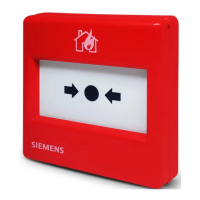17fMRI User Guide
5 Typical EPI Artifacts
The most typical image artifacts in an fMRI exam may be:
• N/2 ghosting
• Distortion
• Spatial shifts
• Chemical shift
5.1 N/2 Ghosting
Figure 7. Example of N/2 ghosting in an EPI sequence.
These artifacts appear as ghosts of the main object, displaced by half the field-of-view (FOV). There are a number
of reasons why one could get N/2 artifacts, but one of the main reasons is mechanical resonance of the scanner
components. To avoid this, use an EPI echo spacing that does not fall within the mechanical resonance region
of the scanner. Typically, for a Tim-TRIO system, the echo spacing in the range of 0.6-0.79 ms causes resonance,
and should be avoided. Parallel imaging (iPAT) reconstruction artifacts could also manifest as N/2 ghosting. The
numbers of reference lines could be increased (to 36-42) to improve the performance of iPAT reconstruction.
In the EPI sequences, the iPAT reference lines are acquired separately, due to which there is no acquisition time
penalty by increasing the number of reference lines acquired. However, the reconstruction time may increase.

